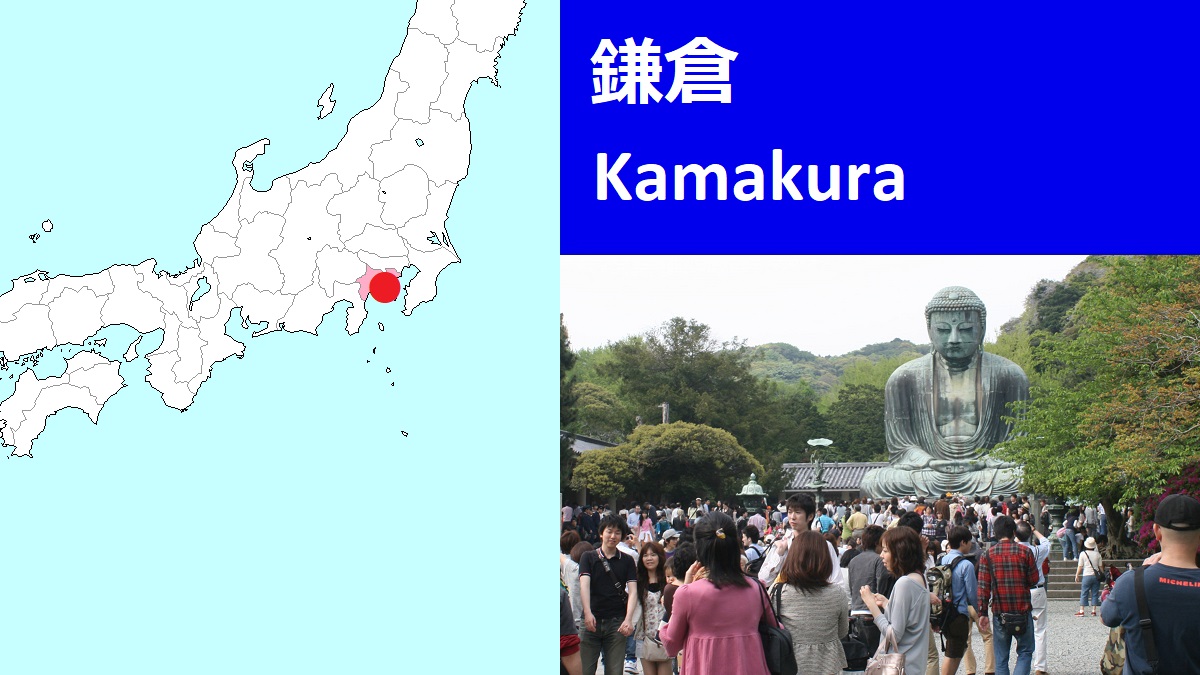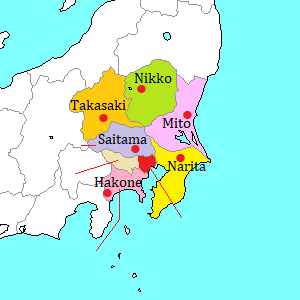Kamakura [鎌倉]
Tourist Attractions in Kamakura
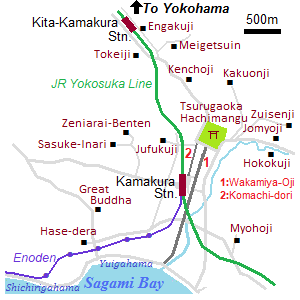
Central and western areas
Northern area
Eastern area
Kamakura is a city located about 15 km south-southwest of Yokohama.
The southern side of the city faces Sagami Bay and there is Miura Peninsula to the southeast of the city.
The whole area of the city is hilly.
From the late 12th century (generally 1192) to 1333, the government of Japan had been placed here.
The founder of the government was Minamoto Yoritomo, the Shogun.
After his administration, Hojo family had held real power.
They built many Zen temples in Kamakura.
In the early 14th century, Emperor Godaigo in Kyoto planned to overthrow the government to regain the government by Emperor.
But the plan was exposed, then he had been exiled to an island.
So, the sympathiers of the Emperor destroyed Hojo family in 1333.
That led to the end of Kamakura Period.
Until the middle of the 15th century, Kamakura was the central city in east Japan.
At that period, current Tokyo area was a rural area.
But some wars had often occured in this area, then Kamakura had declined.
Instead, Edo (current Tokyo) became the central area in eastern Japan from the 17th century.
Kamakura became a local city, and became a tourist city with many temples since that.
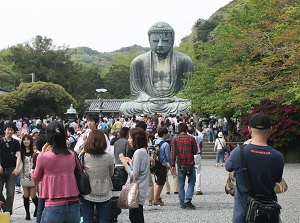
Great Buddha of Kamakura
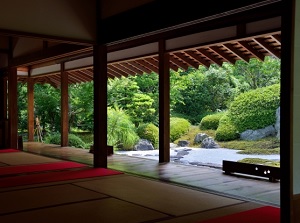
Temple in Kamakura
The central area of Kamakura is surrounded by mountains in the northern, eastern, western sides.
The southern side faces Sagami Bay.
When you tour around this city on foot, probably you must pass several slopes.
Kamakura is a historic city, but it has no historic cityscape.
Many temples and historic spots are dotted in the city, and they are decorated with surrounding small mountains and forests.
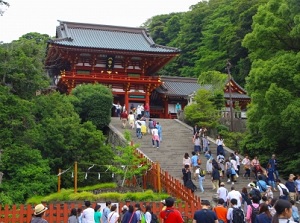
Tsurugaoka Hachimangu
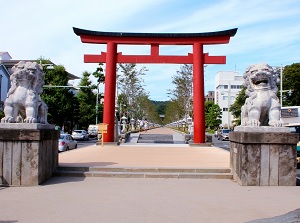
Approach of Tsurugaoka Hachimangu
The central spot is Tsurugaoka Hachimangu shrine (鶴岡八幡宮).
It is located to the north of the center of the city and at the foot of the mountain.
The main approach of the shrine is Wakamiya-oji (若宮大路).
It runs through central Kamakura area from north to south, and the south end is located near Yuigahama beach facing Sagami Bay.
The length is about 1.8 km, and there are 3 Torii gates on this street.
And along this street, many cherry trees are planted, so here is one of the major cherry blossom-viewing spots.
The section from near Kamakura station to the shrine (about 0.5 km) is unique.
The approach for pedestrian is constructed a little higher than the roadways along both sides. (It is called "Dankazura".)
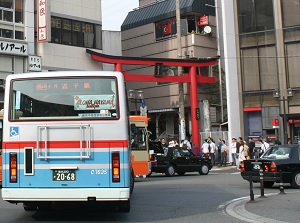
Entrance to Komachi-dori
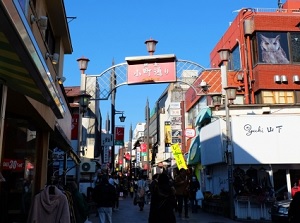
Komachi-dori street
And Komachi-dori street (小町通り) runs about 100 meters west of Wakamiya-oji.
It is a narrow shopping street, and there are many souvenir shops, cafes and restaurants.
It is one of most popular spots in Kamakura, so it is always crowded with visitors.
There are many old temples in Kamakura, but most of them are dotted in the mountain surrounding the city area.
But they are within 2 km from the center of the city.
Beaches of Kamakura
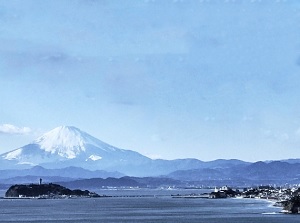
Scenery from the beach of Kamakura
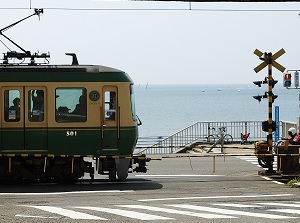
Enoden tram at Shichirigahama
Kamakura has good beaches facing Sagami Bay.
There is Yuigahama beach (由比ヶ浜) at the south end of the approach of Tsurugaoka Hachimangu.
The eastern beach of Yuigahama is called Zaimokuza beach (材木座海岸), and the western beach of Yuigahama is called Shichirigahama (七里ヶ浜).
Yuigahama and Zaimokuza have sand beaches and are crowded with sea bathers during the summer.
Shichirigahama is a narrow beach about 3 km long and the hills come close to the coast.
So the sea is choppy and many surfers come here.
The scenery from Shichirigahama is nice, so there are several resort villas and sanatoriums along this beach.
We can see Enoshima island and Mount Fuji from here.
Enoden (Enoshima Electric Railway) runs along this beach, so we can enjoy the scenery on the train.
How to get here
By JR Line
By JR Yokosuka Line, to Kamakura station, about 52 to 58 minutes from Tokyo, about 24 to 28 minutes from Yokohama.
Kita-Kamakura is next to Kamakura station.
Between both stations, it takes about 3 minutes.
By Enoden
The terminal stations of Enoden are Kamakura and JR Fujisawa of Tokaido Line.
The train runs from Kamakura, through Shichirigahama and Enoshima, to Fujisawa.
It takes 34 minutes from Kamakura to Fujisawa.

